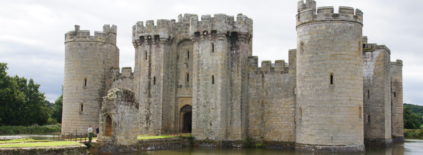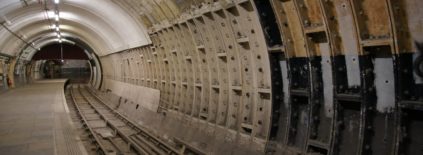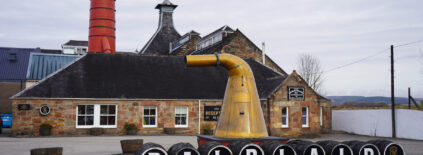The Acropolis is one of the most famous sites of ancient history in the world and is a UNESCO World Heritage Site, and is nearly 2,500 years old. It is mind blowingly impressive how long these structures have stood at the top of the Hill of the Muses in Athens, and the historical significant it represents. Though other acropoli exist throughout Greece and the ancient world the one in Athens is the most well preserved and is made up in several buildings of importance, including the world famous Parthenon.
A restoration project started in 1975 to preserve the Acropolis and the structures; to preserve from polution and restore from the years of destruction and attrition. During all my own visits to the Acropolis there have been heaps of scaffolding and various stones laid out and numbered, ready to be reconstructed into something of magnificence. I often study the white part of the structure, which represents the work of the archeologists to recreate the structures and fill in the missing pieces.
The Acropolis in Athens is made up of several famous buildings, including:
- Parthenon
- Erectheum
- Propylea
- Temple of Athena Nike
- Odeon of Herodes Atticus
The Partenon
The Partenon is the most famous of all the buildings on the Acropolis, and is often what we think of when the Acropolis is mentioned. It was originally constructed as a Temple to honor Athena, the patron goddess of AThens, and has served a variety of roles over the years.
It originally had a roof and was an enclosed building. What remains is the exterior and many of the frieze, which adorned the sides of the temple. The original frieze were moved to the Acropolis Museum where they would be better protected, and others were removed by Lord Elgin and now sit within the British Museum in London or within several other museums globally.
It is an extremely photogenic structure, as can be seen in these photos.
One of my favorite nuances of the photo from the 1960s is a glimpse of the camera equipment, just in front of the structure, that represents photography of that day. In modern times the Acropolis does not allow the use of tripods, or for anyone to enter the structure, but that is one of the very key differences between the photos.
And the later photo, from 2017, showcases the preservation efforts that are ongoing at the Acropolis. I had another photo from 2015 that shows a very similar scene, though a slightly different placement of the cranes.
I can appreciate those critical differences – what was acceptable in the 1960s and how the structure is being preserved in 2017.
Erectheum
The Erechtheum is another ancient temple within the Acropolis, located along the north side, built in honour of Athena and Poseidon. The most famous element of this structure are the Caryatids; the statues of women that hold up a portion of the building.
In time the statues were removed from the building and replaced with replicas. The Caryatids were migrated to the Acropolis Museum, where they could be preserved and looked upon more closely by the public.
What s trikes me about the 1960s photo (other than an Aunt posing in front of the building quite closely), is that there are rods supporting the roof of the Erectheum, rather than the Caryatids themselves. Visitors were able to get qutie close to the building itself, whereas in modern times this area is quite closed off. For context I used a zoom lens to capture the detailed photo I have of the Erecntheum from 2017.
The 2017 photo doesn’t show the same support structures, since the replica Caryatids were created to hold the weight of the roof themselves. There are 2 statues missing all together – one taken by Lord Elgin and another destroyed by him while trying to remove it from the structure. Greek legend says that the remaining 5 Caryatids wail for their lost sister, and perhaps on a quiet Athenian evening you too might hear their despair.
Like Father Like Daughter
I began a lengthy project of scanning my grandfather’s slides back in 2012, and that is the project that led me to create this Then & Now series for my blog. During that project I uncovered this photo of my father standing in front of the Erechtheum. With the help of my High School best friend and travel companion Catriona we recreated the photo in 2017, while I held his Minolta camera in front of the Erechtheum. Perhaps not a like for like but it’s all about the heart and intent with this one.
Like it? Pin it!















Comments (13)
That’s super interesting – I had no idea it’s changed so much. I love that you managed to get a hold of the old photos, too.
I was very lucky that my grandfather and father had kept those slides in such good condition. It’s definitely a fascinating comparison. Thank you!
This was such a fun read! I liked seeing both sets of photos. We were supposed to travel here in May but had to postpone it.
I’m hopeful you’ll get a chance to head there. It’s such a wonderous site and I would highly recommend visiting it!
I love seeing the old photos. The then and now comparison is good. Visited the acropolis myself back in 2007.
Thanks Cosette! There will have been some significant change even between 2007 and today, with all of the ongoing restoration work they’ve been doing.
Visiting Athens was one of my favorite experiences and it was my first big/real trip. Loved reminiscing!
Love to hear that you had such a wonderful experience in Athens, it’s a favorite of mine and close to my heart.
Omg wow. I love this idea of then and now. Such a neat idea! Thanks for sharing!
Thanks Kelly! I’m lucky to have photos to use from family for the series, and love sharing it!
I love visiting the acropolis. Seeing the difference of it between the years is super cool!
Thanks Francesca. It’s interesting to see how such an ancient monument has changed over time.
So interesting! What a treat to read!